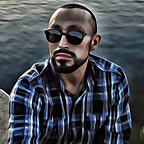Egon Schiele’s Self-Portrait: Framing Oneself as a Saint, Martyr, and Warning to Future Generations
Egon Schiele is by far one of the cult painters/drawers that during the beginning of the past century defy, through self-inspection and the rendering of provocative artwors, a sociopolitical order that was still fueled by nineteenth-century moralist anxieties and a view of reality that placed sexuality as both a decadent and censored human experience that, nonetheless, had been going through a process of liberalization since the last third of the ninetenth century.
Among the many uncomfortable positions portrayed in his sexually-oriented works, which enphasized the relationship between flexibility, creative behavior, and sexual pleasure, his self-portrait as Saint Sebastian, despite the fact that lacks any sexualized content, stands out as one of his most introspective works, particularly if it is contrasted with other artistic renderings of Saint Sebastian from the Renaissance.
For instance, the Saint Sebastian by Giovanni Antonio Bazzi, best known as II Sodoma, stands out as one of the Renaissance portrayals of the Saint with more common points of comparison with Schiele’s self-portrait. Saint Sebastian was an early Christian martyr who symbolized the early persecussion of Christians by the Roman Emperor Diocletian. Even though the saint was tortured and attempted to be killed by the hit of iron arrows, the saint didn’t die due to those deadly darts, as he was trusting his fate to the mediation of Christian divinity.
Throughout the years, as the self-consciousness that early modernity infused in the mindsets of European societies, Saint Sebastian began to symbolize the martyrdom inherent to artistic creativity. Schiele’s self-portrait not only depicts him wearing a blood red painter’s suit, one of those that nowadays industrial and some graffiti painters wear while approaching urban works of notable dimensions.
According to Simon Abrahams in his work Every Painter Paints Himself: Portraits of the Artist and An Alter Ego, the arrows in Schiele’s self-portrait represent each of the brushstrokes that the painter has to deliver in the long process of completing his artwork. Nevertheless, when the artwork is a self-portrait, each brushstroke becomes like a conscious arrow of self-representation. In Schiele’s case, his self-portrait also suggests, not only by the blood red of his painter’s suit, a kind of modernist martyrdom that overly conveys to the spectator either a feeling of rejection towards the hard work of self-representation and self-creation or a kind of empathy which is mostly cognizable to those who have endured similar artistic or even biopolitical ventures, and whose self/selves are not only publicly displayed (thus allowing vulnerability to be also perceived by the eyes of others), but also framed as an expression of an inner strength and unwavering trust in one’s work.
Furthermore, Schiele’s self-portrait, unlike most Saint Sebastian’s paintings where the arrows are pointed at vital places, changes the direction of the arrows and, instead, the spectator witness an attack towards Schiele’s articulations and bottom, precisely because for a painter who works standing up the articulations and spine are vital physical elements in the process of creativity. The arrow in the bottom, also, clearly conveys the refusal of Schiele to paint sitting down, as if that action not only was going to cut the margins of his panoramic vision, but also was a deceiving invitation to a kind of immobility that would bring his artistic endeavors to an end.
The painter must endure verticality, similarly to Saint Sebastian whose precarious maneuver to remain stading up are indeed due to the infliction of his punishment that includes being tied around the trunk of a tree. It is indeed, in both Schiele’s self-portrait and II Sodoma’s Saint Sebastian, the left arm that which suffers the most, even though it can pass unoticed to the spectator that hasn’t pursued any form of artistic expression. Historically, the left arm has been the least used by artists, since becoming ambidextrous among painters, and the population in general, hasn’t been at all a source of concern.
Nonetheless, Schiele seems to suggest that developing the skill of using both hands and strengthening the articulations of both hands will become vital in a future historical scenario where one-handed people will surrender, as casual and inconsequential martyrs of a society that already relies in technology to gather ambidextrous forms of manual labor, including the performing arts, as current AI technologies (like Google’s Prometheus, among many others) have already, even if rudimentarily, demonstrated in the wake of this new millennium.
However, Schiele’s self-portrait as a suffering artist, that despite the darts of self-consumption and the exhaustive task of constant artistic creativity is still able to preserve his verticality, could be seen as a role model for the future generations, that as we have witnessed due to the current and on-going Pandemic, will be constantly invited to surrender to sitting down and looking fixedly to the small space that inhabits between one’s feet.
